Monacor DMS-1 Handleiding
Bekijk gratis de handleiding van Monacor DMS-1 (2 pagina’s), behorend tot de categorie Microfoon. Deze gids werd als nuttig beoordeeld door 27 mensen en kreeg gemiddeld 4.0 sterren uit 14 reviews. Heb je een vraag over Monacor DMS-1 of wil je andere gebruikers van dit product iets vragen? Stel een vraag
Pagina 1/2

ELECTRONICS FOR SPECIALISTS ELECTRONICS FOR SPECIALISTS ELECTRONICS FOR SPECIALISTS ELECTRONICS FOR SPECIALISTS ELECTRONICS FOR SPECIALISTS ELECTRONICS
DMS-1
Bestell-Nr. • Order No. 0233490
MONACOR INTERNATIONAL GmbH & Co. KG • Zum Falsch 36 • 28307 Bremen • Germany
Copyright© by MONACOR INTERNATIONAL. All rights reserved. A-0196.99.03.07.2021
Pied de micro de table
Cette notice s‘adresse aux utilisateurs sans
connaissances techniques particulières. Veuil-
lez lire la présente notice avant le fonction-
nement et conservez-la pour pouvoir vous y
reporter ultérieurement.
1 Possibilités d’utilisation
Le pied de micro de table stable et anti-dérapant
sert pour recevoir un microphone col de cygne
avec branchement XLR. L’entrée et la sortie du
pied sont symétriques.
2 Conseils importants
•
Le pied de micro n’est conçu que pour une
utilisation en intérieur. Protégez-le de tout
typede projections d’eau, des éclaboussures,
d’une humidité d’air élevée et de la chaleur
(plage de température de fonctionnement au-
torisée : 0 – 40 °C).
•
Pour le nettoyage, utilisez uniquement un
chiffon sec et doux, en aucun cas de produits
chimiques ou d’eau.
•
Nous déclinons toute responsabilité en cas de
dommages matériels ou corporels résultants si
le pied de micro est utilisé dans un but autre
que celui pour lequel il a été conçu, s’il n’est
pas correctement branché ou s’il n’est pas ré-
paré par une personne habilitée ; en outre, la
garantie deviendrait caduque.
Lorsque le pied de micro est définiti-
vement retiré du service, éliminez-le
conformément aux directives locales.
CARTONS ET EMBALLAGE
PAPIER À TRIER
3 Utilisation
Placez le micro col de cygne dans la prise XLR
femelle sur la face supérieure du pied. La prise
possède un verrouillage qui se désenclenche
lorsque le levier PUSH est abaissé pour sortir la
fiche. Reliez la sortie XLR à l’arrière du pied via
un cordon de branchement (p. ex. un cordon de
la série MEC-…) à une entrée micro symétrique
sur l’appareil audio (p. ex. table de mixage, am-
plificateur).
Pour allumer le microphone, poussez l’inter-
rupteur sous la prise XLR entièrement vers le haut.
Si l’interrupteur est dans la position inférieure (re-
pérage OFF visible), le micro est éteint.
4 Caractéristiques techniques
Branchements: . . . . . XLR, symétriques
Dimensions : . . . . . . . 135 × 55 × 145 mm
Poids: . . . . . . . . . . . . 1,3 kg
Tout droit de modification réservé.
Desk Microphone Base
These instructions are intended for users with-
out any specific technical knowledge. Please
read these instructions carefully prior to oper-
ation and keep them for later reference.
1 Applications
This sturdy, non-slip desk microphone base is used
for a gooseneck microphone with XLR connection.
The input and output of the base are balanced.
2 Important Notes
•
The microphone base is suitable for indoor
use only. Protect it against dripping water and
splash water, high air humidity and heat (ad-
missible ambient temperature range 0 – 40 °C).
•
For cleaning only use a dry, soft cloth; never use
water or chemicals.
•
No guarantee claims for the microphone base
and no liability for any resulting personal dam-
age or material damage will be accepted if the
microphone base is used for other purposes
than originally intended, if it is not correctly
connected or if it is not repaired in an expert
way.
If the microphone base is to be put out
of operation definitively, dispose of the
microphone base in accordance with
local regulations.
3 Operation
Connect the gooseneck microphone to the XLR
jack on the upper side of the base. The jack is pro-
vided with a latching device. To remove the plug,
press the PUSH lever to unlatch the plug. Connect
the XLR output at the rear of the base via a con-
nection cable (e. g. a cable of the MEC series) to
a balanced microphone input on the audio device
(e. g. mixer, amplifier).
For switching on the microphone, slide the
switch below the XLR jack fully to the upper posi-
tion. With the switch in the lower position (letter-
ing OFF visible), the microphone is switched off.
4 Specifications
Connections: . . . . . . XLR, balanced
Dimensions: . . . . . . . 135 × 55 × 145 mm
Weight: . . . . . . . . . . 1.3 kg
Subject to technical modification.
Mikrofon-Tischfuß
Diese Anleitung richtet sich an Benutzer
ohne besondere Fachkenntnisse. Bitte lesen
Sie die Anleitung vor dem Betrieb gründlich
durch und heben Sie sie für ein späteres
Nachlesen auf.
1 Einsatzmöglichkeiten
Dieser rutschfeste und stabile Mikrofon-Tischfuß
dient zum Aufstecken eines Schwanenhalsmik-
rofons mit XLR-Anschluss. Ein- und Ausgang des
Mikrofonfußes sind symmetrisch beschaltet.
2 Wichtige Hinweise
•
Der Mikrofonfuß ist nur zur Verwendung im
Innenbereich geeignet. Schützen Sie ihn vor
Tropf- und Spritzwasser, hoher Luftfeuchtigkeit
und Hitze (zulässiger Einsatztemperaturbereich
0 – 40 °C).
•
Verwenden Sie für die Reinigung nur ein tro-
ckenes, weiches Tuch, niemals Chemikalien
oder Wasser.
•
Wird der Mikrofonfuß zweckentfremdet, nicht
richtig angeschlossen oder nicht fachgerecht
repariert, kann keine Haftung für daraus re-
sultierende Sach- oder Personenschäden und
keine Garantie für den Mikrofonfuß übernom-
men werden.
Soll der Mikrofonfuß endgültig aus dem
Betrieb genommen werden, entsorgen
Sie ihn gemäß den örtlichen Vorschriften.
3 Inbetriebnahme
Das Schwanenhalsmikrofon in die XLR-Buchse auf
der Oberseite des Fußes stecken. Die Buchse be-
sitzt eine Verriegelung, die beim Herausziehen des
Steckers durch Herunterdrücken des PUSH-Hebels
wieder gelöst wird. Den XLR-Ausgang hinten am
Fuß über ein Anschlusskabel (z. B. ein Kabel der
MEC-Serie) mit einem symmetrischen Mikrofon-
eingang am Audiogerät (z. B. Mischpult, Verstär-
ker) verbinden.
Zum Einschalten des Mikrofons den Schalter
unter der XLR-Buchse ganz nach oben schieben.
Steht der Schalter in der unteren Position (Schrift-
zug OFF sichtbar), ist das Mikrofon ausgeschaltet.
4 Technische Daten
Anschlüsse: . . . . . . . . XLR, symmetrisch
Abmessungen: . . . . . 135 × 55 × 145 mm
Gewicht: . . . . . . . . . . 1,3 kg
Änderungen vorbehalten.
DeutschEnglishFrançais

ELECTRONICS FOR SPECIALISTS ELECTRONICS FOR SPECIALISTS ELECTRONICS FOR SPECIALISTS ELECTRONICS FOR SPECIALISTS ELECTRONICS FOR SPECIALISTS ELECTRONICS
DMS-1
Bestell-Nr. • Order No. 0233490
MONACOR INTERNATIONAL GmbH & Co. KG • Zum Falsch 36 • 28307 Bremen • Germany
Copyright© by MONACOR INTERNATIONAL. All rights reserved. A-0196.99.03.07.2021
Podstawa Mikrofonu
Niniejsza instrukcja przeznaczona jest dla
użytkowników, którzy nie posiadają wiedzy
i doświadczenia technicznego. Przed roz-
poczęciem użytkowania proszę zapoznać
się z instrukcją, a następnie zachować ją do
wglądu.
1 Zastosowanie
Urządzenie to służy jako podstawa mikrofonu za-
mocowanego na gęsiej szyi wyposażonej w łącze
XLR. Zarówno wejście, jak i wyjście urządzenia jest
symetryczne.
2 Środki bezpieczeństwa
•
Urządzenia przeznaczone są wyłącznie do pracy
wewnątrz pomieszczeń. Należy chronić je przed
działaniem wody, wysokiej wilgotności oraz
wysokiej temperatury (dopuszczalny zakres
wynosi 0 – 40 °C).
•
Do czyszczenia używać suchej miękkiej ście-
reczki. Nie stosować wody i środków chemicz-
nych.
•
Producent ani dostawca nie ponoszą odpo-
wiedzialności za uszkodzenie sprzętu bądź
obrażenia użytkownika, jeżeli urządzenie było
używane niezgodnie z przeznaczeniem, zostało
nieodpowiednio podłączone lub poddane nie-
autoryzowanej naprawie.
Po całkowitym zakończeniu eksploata-
cji, należy oddać podstawę mikrofonu
do punktu recyklingu, aby nie zaśmiecać
środowiska.
3 Obsługa
Podłączyć mikrofon na gęsiej szyi do wtyku XLR
znajdującego się w górnej części podstawy. Wtyk
wyposażony jest w zatrzask mocujący. Aby odłą-
czyć gęsią szyję od podstawy, należy wcisnąć
dźwignię oznaczoną napisem PUSH. Połączyć
podstawę za pomocą wtyku XLR znajdującego
się w jej tylnej części do symetrycznego wejścia
mikrofonowego urządzenia audio (np.: wzmac-
niacza, czy miksera). Do tego celu można posłużyć
się jednym z przewodów serii MEC.
Aby włączyć mikrofon należy przesunąć prze-
łącznik znajdujący się poniżej wtyku XLR maksy-
malnie w górę. Przełącznik ustawiony w dolnej
pozycji (widoczne oznaczenie OFF) oznacza, że
mikrofon jest wyłączony.
4 Dane techniczne
Złącza: . . . . . . . . . . . XLR, symetryczne
Wymiary: . . . . . . . . . 135 × 55 × 145 mm
Waga: . . . . . . . . . . . . 1,3 kg
Z zastrzeżeniem możliwości zmian.
Base de Micrófono
para Sobremesa
Estas instrucciones van dirigidas a usuarios
sin ningún conocimiento técnico específico.
Lea atentamente estas instrucciones antes de
funcionamiento y guárdelas para usos pos-
teriores.
1 Aplicaciones
Esta base de micrófono para sobremesa es estable
y antideslizante y se puede utilizar para conectar
un micrófono de cuello de cisne con conexión
XLR. La entrada y la salida de la base son simé-
tricas.
2 Notas Importantes
•
La base de micrófono está adecuada para su uti-
lización sólo en interiores. Protéjala de goteos y
salpicaduras, elevada humedad del aire y calor
(temperatura ambiente admisible: 0 – 40 ºC).
•
Para limpiarla, utilice sólo un paño suave y seco;
no utilice nunca ni agua ni productos químicos.
•
No podrá reclamarse garantía o responsabilidad
alguna por cualquier daño personal o material
resultante si la base de micrófono se utiliza para
otros fines diferentes a los originalmente conce-
bidos, si no se conecta correctamente o no se
repara por expertos.
Si la base de micrófono se va a dejar
fuera de servicio definitivamente, des-
hágase de la base de micrófono según
las normativas locales.
3 Funcionamiento
Conecte el micrófono de cuello de cisne en la
toma XLR hembra de la parte superior de la base.
La toma dispone de un bloqueo que se suelta
cuando se baja la palanca PUSH para sacar el
conector. Conecte la salida XLR a la trasera de la
base vía un cable de conexión (p. ej. un cable de
la serie MEC-… ) con una entrada de micrófono
simétrica del aparato de audio (p. ej. mezclador,
amplificador).
Pulse totalmente hacia arriba el interruptor
bajo de la toma XLR para conectar el micrófono.
Si el interruptor está en la posición inferior (in-
scripción OFF visible), el micrófono está apagado.
4 Especificaciones
Conexiones: . . . . . . . XLR, simétricas
Dimensiones: . . . . . . 135 × 55 × 145 mm
Peso: . . . . . . . . . . . . . 1,3 kg
Sujeto a modificaciones técnicas.
Base da tavolo per microfono
Queste istruzioni sono rivolte all‘utente
senza conoscenze tecniche specifiche. Vi
preghiamo di leggerle attentamente prima
della messa in funzione e di conservarle per
un uso futuro.
1 Possibilità d’impiego
Questa base da tavolo per microfono, robusta e
antiscivolo serve per inserirvi un microfono a collo
di cigno con connessione XLR. L’ingresso e l’uscita
della base sono simmetrici.
2 Avvertenze importanti
•
La base per microfono è prevista solo per l’uso
all’interno di locali. Proteggerla dall’acqua goc-
ciolante e dagli spruzzi d’acqua, da alta umidità
dell’aria e dal calore (temperatura d’impiego
ammessa fra 0 e 40 °C).
•
Per la pulizia usare solo un panno morbido,
asciutto; non impiegare in nessun caso prodotti
chimici o acqua.
•
Nel caso d’uso improprio, di collegamento sba-
gliato o di riparazione non a regola d’arte della
base, non si assume nessuna responsabilità per
eventuali danni consequenziali a persone o a
cose e non si assume nessuna garanzia per la
base.
Se la base per microfono deve essere
messa definitivamente fuori servizio,
smaltire la base per microfono in con-
formità con le normative locali.
3 Messa in funzione
Inserire il microfono a collo di cigno nella presa
XLR posta sul lato superiore della base. La presa
è provvista di un bloccaggio che viene aperto
spingendo in basso la levetta PUSH quando si
sfila il connettore. Collegare l’uscita XLR sul lato
posteriore della base con un ingresso microfono
simmetrico dell’apparecchio audio (p. es. mixer,
amplificatore) servendosi di un cavo di collega-
mento (p. es. di un cavo della serie MEC).
Per attivare il microfono, spostare l’interrut-
tore sotto la presa XLR completamente in alto.
Nella posizione inferiore (si vede OFF), il microfono
è spento.
4 Dati tecnici
Contatti : . . . . . . . . . XLR, simmetrici
Dimensioni: . . . . . . . . 135 × 55 × 145 mm
Peso: . . . . . . . . . . . . . 1,3 kg
Con riserva di modifiche tecniche.
ItalianoEspañolPolski
Product specificaties
| Merk: | Monacor |
| Categorie: | Microfoon |
| Model: | DMS-1 |
Heb je hulp nodig?
Als je hulp nodig hebt met Monacor DMS-1 stel dan hieronder een vraag en andere gebruikers zullen je antwoorden
Handleiding Microfoon Monacor

22 Juni 2023

19 Juni 2023

19 Juni 2023

19 Juni 2023

18 Juni 2023

16 Juni 2023

15 Juni 2023

11 Juni 2023

11 Juni 2023

11 Juni 2023
Handleiding Microfoon
- Shadow
- M-Audio
- Hama
- TC Helicon
- Genesis
- Kogan
- Steren
- Røde
- Comica
- Hiberr
- Trust
- Polsen
- Manta
- Neat
- DAP Audio
Nieuwste handleidingen voor Microfoon

13 September 2025

12 September 2025
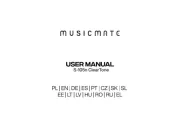
12 September 2025
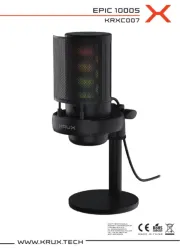
12 September 2025
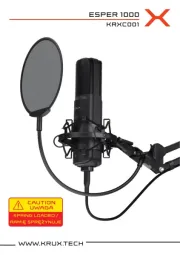
12 September 2025
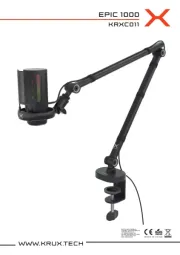
12 September 2025
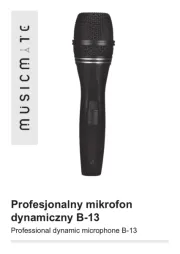
12 September 2025
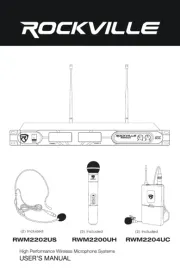
8 September 2025
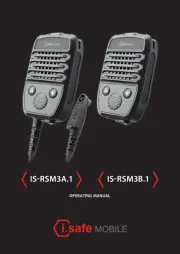
8 September 2025

8 September 2025